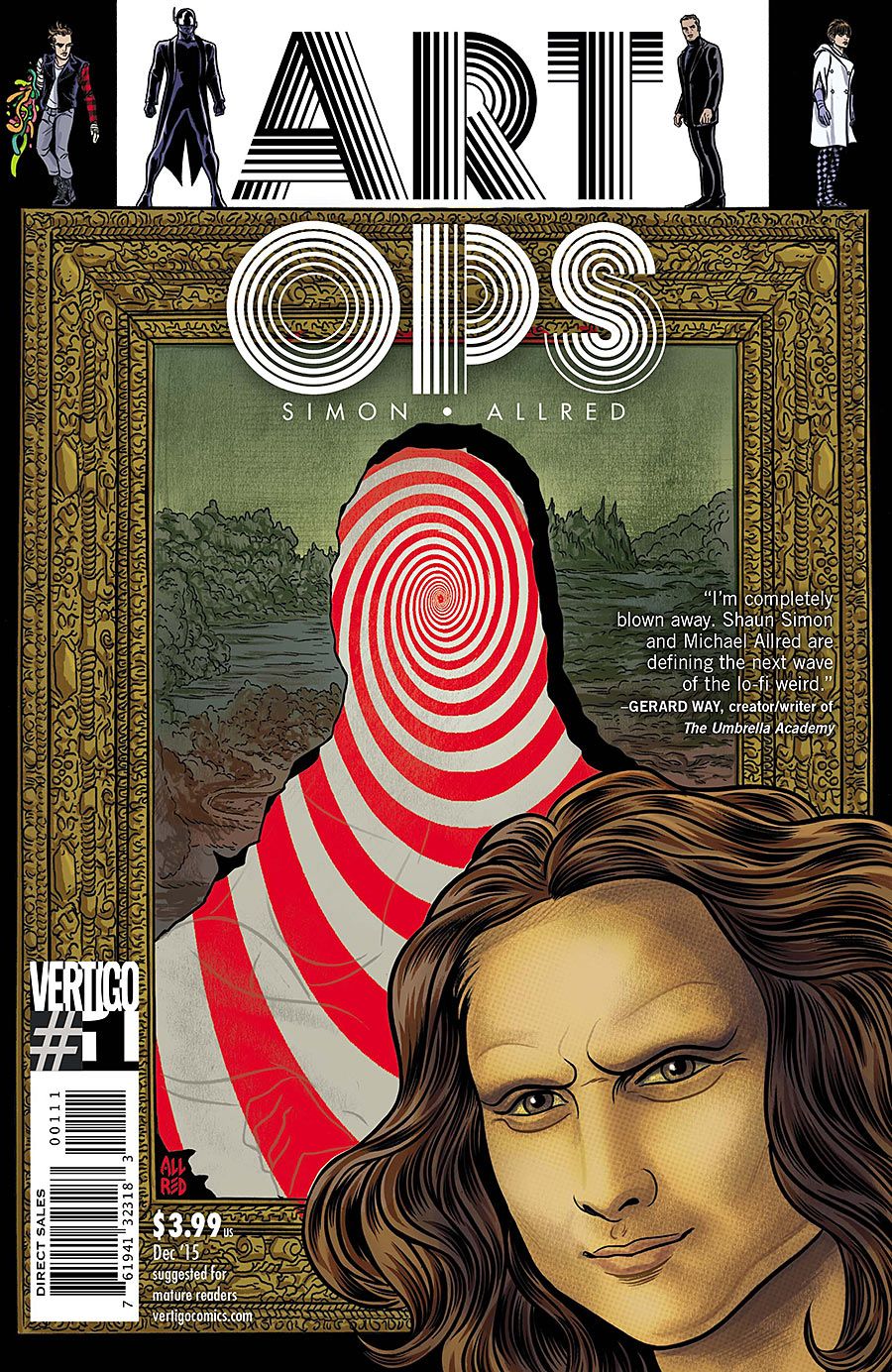With a concept that's more compelling than its characters, "Art Ops" #1 is a solid first issue that didn't quite manage to hook me. Michael and Laura Allred are clearly enjoying themselves, presenting a world where art is real enough to sometimes escape its frames, and their quiet creativity in this book is delightful. Writer Shaun Simon knows how to pace a caper, and watching the title Ops agents at work was fun. However, Simon also spends much of the issue developing a non-Ops protagonist who really failed to draw me in. With so much space spent on him, issue #1 didn't leave me craving more. Despite this, taken as a whole, "Art Ops" #1 has laid the groundwork for a diverting series.
This is such a fun concept to see visualized, and it's the sort of strangeness that only comics could capture. From humans with Pollack-inspired paint-splatter arms to Mona Lisa at a supermarket, the visuals are as weird and winking as one could hope for. However, in the hands of the Allreds, it never feels too wacky or clownish. They have a wonderful way of making the bizarre-o look downright mellow, and there's a casual cool to even their most outlandish designs. As a result, "Art Ops" isn't too big on spectacle; instead, I felt like I was peering into an undiscovered, off-kilter world, where everything is just slightly stranger and hipper than our own.
Plot-wise, Simon keeps everything at a brisk, caper-like clip. While the Art Ops are bent on saving rather than stealing art, Simon cleverly borrows from the conventions and pace of great heist movies, and it keeps the issue moving nicely. The hops between scenes read smoothly, the suspense is built well and the surprises drop smartly.
However, "Art Ops" spends a lot of time developing its protagonist, Reggie, but it doesn't manage to make him compelling. His rejection of his "homo neglectus" mother and her help reads as juvenile rather than justified -- though, to be fair, it's possible that it's meant to. Reggie complains a lot about his mother's workaholic neglect, but -- on the page -- she only ever shows competence and caring. That contrast could be intentional. Unfortunately, the death of Reggie's girlfriend Jess also doesn't land, and it doesn't feel intentional. The scene is more fridge-y than anything, particularly since the reader doesn't even know Jess's name until one panel before her death. (In contrast, Jess addresses Reggie by name three times in the same span.) The use of "she" and "her" in the captions -- "I believed my story was with hers" and "She should have stayed home" -- has a poetic rhythm, but -- rather than reading like poetry -- it reads like a reminder that Jess could have been any woman, with any name, since she isn't a character in her own right. She's a tool for Reggie's development. (This could be remedied in later issues, but it stands for now.)
At the end of its first issue, "Art Ops" #1 has one of the legs of a solid foundation. The creative team executes well on its concept. Given some more time to develop its characters, it could make them just as memorable as the visuals and ideas at play here.

